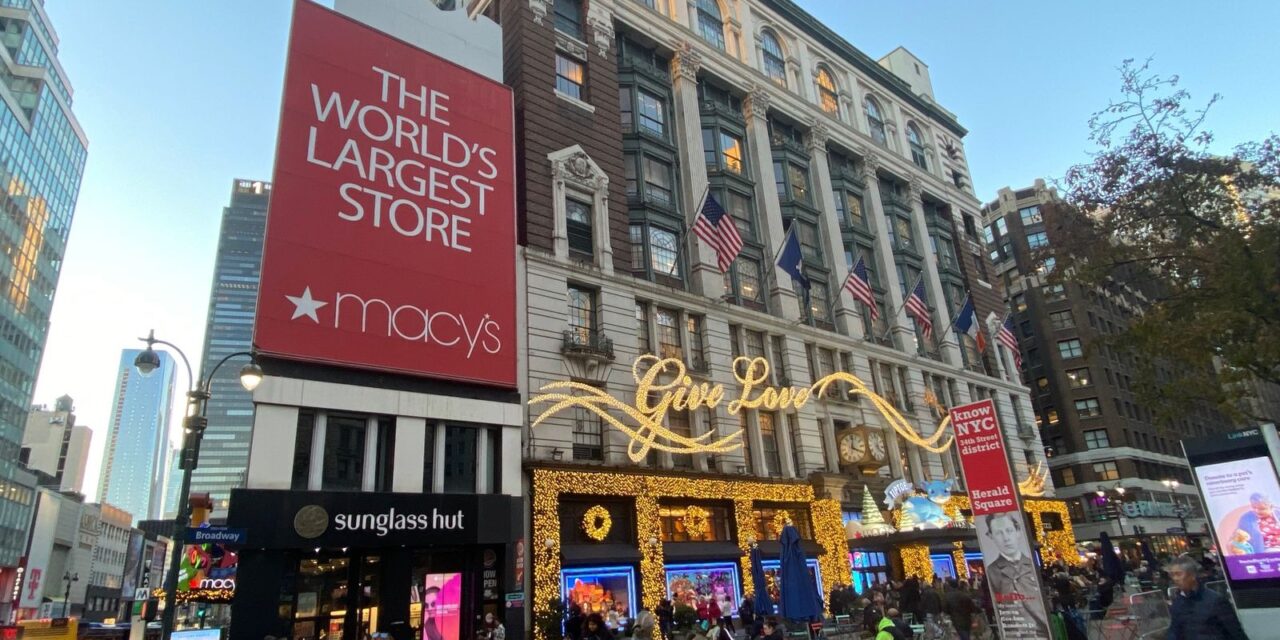The outside of the Macy’s store in Herald Square in NYC during the holidays. E-commerce sales are anticipated to rise between 10.3% and 12.8% this holiday season as shoppers seek out deals. Kaarin Vembar/Retail Dive
By Tatiana Walk-Morris
Source: www.retaildive.com, September 2023
That’s slower than last year, as the research firm expects inflation’s impact to moderate and shoppers to have fewer pandemic-era savings.
Dive Brief:
- For the second year in a row, holiday sales growth is expected to slow, with retail sales predicted to increase between 3.5% and 4.6% this year compared to last year’s holiday season, according to a Deloitte report released Wednesday.
- The report predicts that holiday sales, from November 2023 to January 2024, will reach between $1.54 trillion and $1.56 trillion. The projections represent more moderate growth than last year, when holiday sales increased 7.6% and reached $1.49 trillion.
- E-commerce sales are anticipated to rise between 10.3% and 12.8% year over year, which could push online holiday sales to between $278 billion and $284 billion.
Dive Insight:
After years of increased spending on services, that behavior could cool off, while spending on durable goods remains high compared to pre-pandemic levels, Nick Handrinos, vice chair of Deloitte and U.S. retail, wholesale, and distribution and consumer products leader, said in a statement. Handrinos noted that e-commerce sales could remain strong during the holiday season as shoppers look for online deals to maximize their tight budgets.
“We expect healthy employment and income growth to keep the volume of sales growing for the 2023 holiday season,” Daniel Bachman, Deloitte’s U.S. economic forecaster, said in a statement. “Inflation, which accounted for much of the increase in the value of retail sales last year, should moderate. This means the total value of retail sales will grow more slowly than last year. Our forecast also reflects a decreasing pool of pandemic-era savings, both of which will weigh on retail sales and are reflected in our lower projected growth for the season.”
Heading into the holiday season, retailers have several factors working in their favor, including improving consumer sentiment and a UPS strike that was narrowly averted. However, retailers are waiting to see the impact of inflation and student loan debt repayments resuming.
While inflation appears to be cooling, the Consumer Price Index rose 0.6% in August, an increase driven partly by the rising cost of gas and shelter, according to a Wednesday release from the U.S. Bureau of Labor Statistics.
Plus, the Supreme Court struck down President Biden’s student loan forgiveness plan in June, eliminating the possibility of borrowers earning less than $125,000 shedding up to $20,000 in student debt. Once payments resume this fall, consumers could pay roughly $300 per month in loan repayments, per an analysis from the consumer data firm Earnest Analytics. GlobalData research predicts that the home goods and clothing categories will take the greatest hit from consumers with less discretionary spending available.

